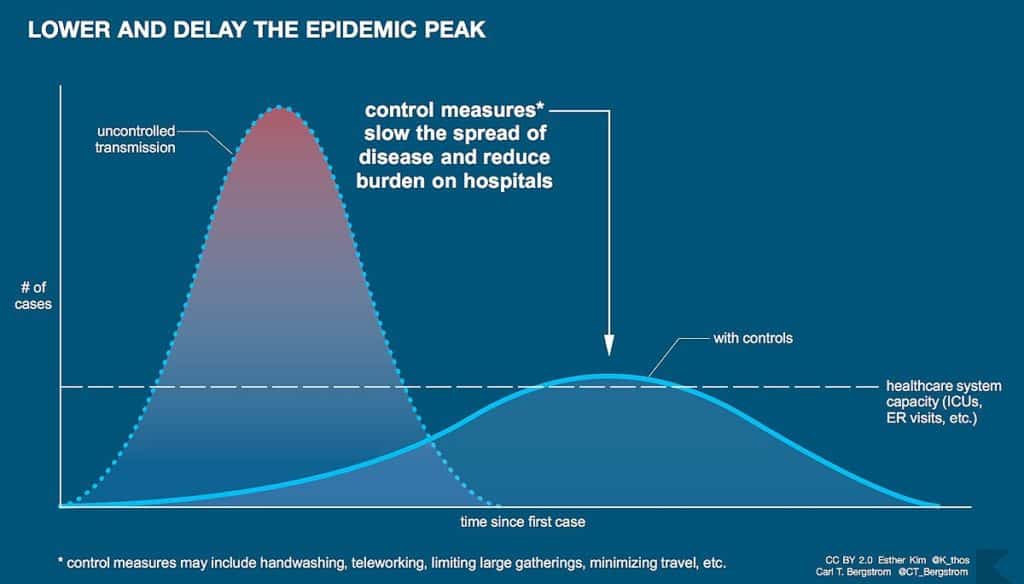“Flattening the curve” refers to a graph that shows the number of COVID-19 cases over time. This graph is based on the fact that over time, short of a vaccine or cure of some sort, most people will eventually get the disease. Of these people, a seemingly small percentage will need to be hospitalized. The problem is that if everyone were to get the disease within a short period of time, the total number of people who would need hospital care would exceed available beds and/or other resources.
So, what we mean by flattening the curve is reducing the rate at which people are infected. This will allow us to treat people over a longer period of time, and to increase our capacity for care over that time.

How do we flatten the curve?
Flattening the curve requires collective actions without considering whether you are infected or not. Social distancing, wearing face coverings, washing hands, and disinfecting surfaces are all tools we can use to slow the spread of COVID-19.
How do we know if it is working?
If measures taken to flatten the curve work, it may seem like we never needed them at all. But, that is the point! In areas where we successfully flatten the curve, and resources are not overtaxed, COVID-19 may seem no worse than a cold or the flu. The thing is, when we don’t have enough resources, things get scary very quickly. We have seen this in the U.S. already in places that have become hot spots for the disease. This followed similar horror stories from Italy and Spain.
How does testing for COVID-19 fit in?
As we are able to test more people, both to see who is currently infected and who has antibodies that show they had previously been infected with the disease, we will have additional data that will help flatten the curve.



